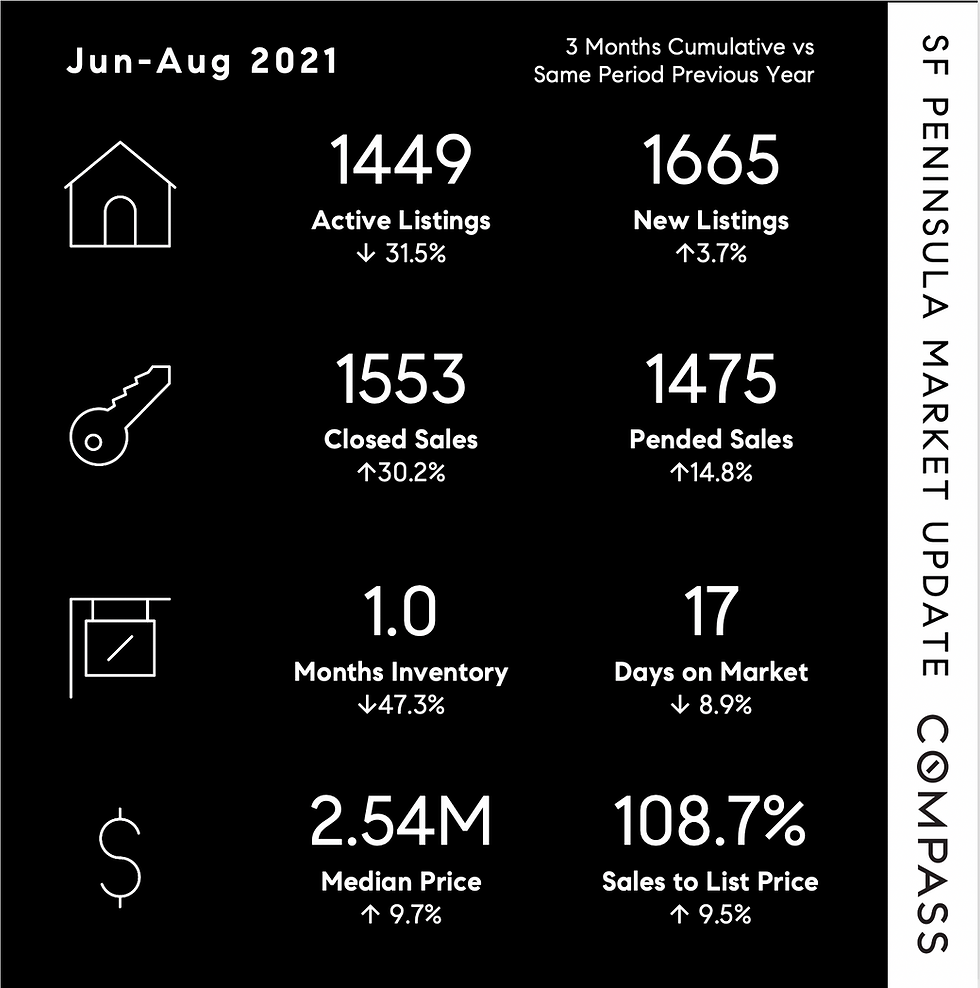The Dog Days of Summer
- Rob Purnell

- Sep 14, 2021
- 2 min read
Updated: Nov 5, 2021

Unless you're living under a rock you won't have missed that it's been an active year for Peninsula real estate. (And if you are living under a rock, give me a call. I'll help you sell it and trade into a spacious new cave.)
But throughout August every headline seemed to herald a market cooling, with some even predicting a more dramatic impending crash. Is it true?

In a word, NO. So why is Chicken Little getting so much air time?
In my recent article The Truth Behind Real Estate Statistics, I talked about how the media loves dramatic headlines, counting on short news cycles and short public memory to avoid accountability. What they are (collectively) failing to grasp is the consistent seasonality cycles in real estate markets.
From mid to late July through Labor Day housing sales fall off from the peak Spring selling season. I call this the 2nd trough since the largest drop in activity falls between Thanksgiving and early February. Of course, this is followed by the 2nd peak, which is why we're suddenly seeing a wave of new listings hitting the market.
In the chart below we see that late summer sales regularly fall off 20% - 30% from the Spring peak. This year the 2nd trough only brought a 12% reduction, less than half of normal, and has already started to rebound in September. As there have been no material changes in fundamental market forces, this feels like normal seasonality to me, not a dramatic market cooling.
The Dog Days of Summer...are over.

Longer-Term Trends
Perhaps I shouldn't be so hard on real estate reporters. They're not the only ones who ignore seasonality at their analytic peril. As an asset class real estate is not considered highly liquid, but the housing market is surprisingly dynamic. To understand the trends you have to look at longer time frames in order to mute the effects of seasonality. Three months is probably a minimum.

Taking Advantage of Seasonality
Similar to the stock market it can be advantageous to buy on the dips and sell on the peaks. If you're looking to buy, this means your best opportunity to negotiate migh be during the summer and winter troughs, with the trade-off being that there is typically less inventory during these periods. For sellers, while buyers may have less inventory to choose from during the slow period, remember that buyers have less inventory to choose from, and one of them could be yours!
Seasonality is an important force in real estate, but if you're thinking of selling, buying, or investing, remember that it's all relative. Lots of properties are sold during the winter holidays, especially in the Bay Area with our mild climate.
Market Reports
For a deeper dive into regional markets see these reports:
If you want an analysis of another region, city, or even neighborhood, you can call or email me and I will provide it for you.







Comments